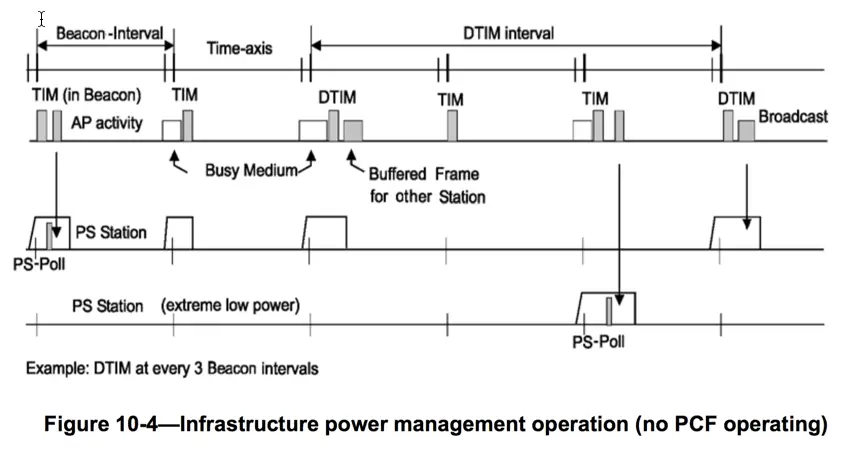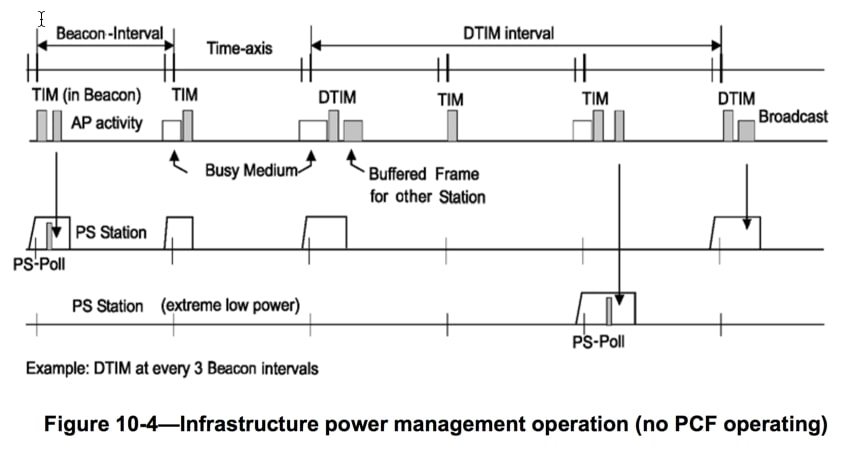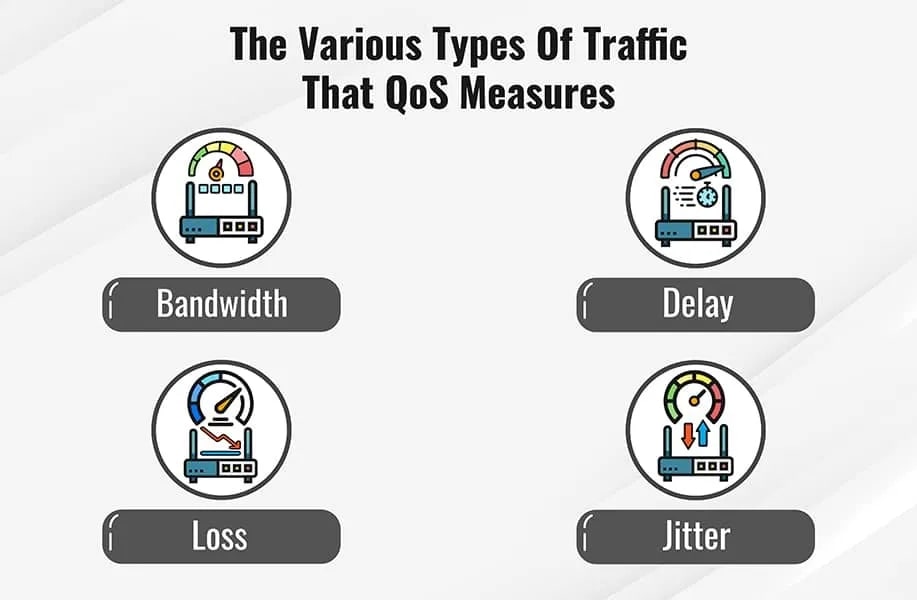This article will discuss the DTIM interval, why it’s important, and how to choose the best setting for your network.
You may have encountered the DTIM (Delivery Traffic Indication Message) interval set if you own a Wi-Fi router. This setting controls the frequency at which your router sends broadcast messages to connected devices, informing them of available network traffic.
DTIM interval can impact network performance and battery life, so it’s important to set it properly. Continue reading this article to learn more about the features, advantages, and disadvantages.
Table of Contents
What Is DTIM Interval?
DTIM interval is a setting that controls the frequency at which a router sends broadcast messages, informing devices of available network traffic.
The DTIM period is measured in beacon intervals, the time between two consecutive broadcast messages the best router for frontier sends.
Why Is DTIM Interval Important?
DTIM interval impacts network performance and battery life. A shorter interval will result in faster data transfer speeds and improved network performance, but it will also consume more power, draining the battery of mobile devices more quickly.![]()
On the other hand, a longer interval will conserve battery life but can result in slower data transfer speeds and poorer network performance.
See Also: Beetel Router Login Guide | Ultimate Login Guide
Features Of DTIM Interval
We will discuss some of the key features of the interval and how they can affect wireless network performance.
DTIM Interval Duration
The interval duration determines how often the AP sends a message to the wireless clients. It is measured in beacon intervals, the time between two successive beacons sent by the AP. Moreover, The network administrator with an admin login can configure the interval duration to optimize the network performance based on the application requirements.
 Shorter intervals result in more frequent DTIM messages, which can reduce the latency of real-time applications such as voice and video streaming. However, shorter intervals can also increase network overhead, impacting overall performance.
Shorter intervals result in more frequent DTIM messages, which can reduce the latency of real-time applications such as voice and video streaming. However, shorter intervals can also increase network overhead, impacting overall performance.
See Also: How To Perform Vodafone Router Login | The Easy Way
Power Consumption
Wireless clients that are in sleep mode consume less power than those that are active. When a client receives a DTIM message, it wakes up from sleep mode to receive the data. The interval duration can impact the power consumption of wireless clients.
 Longer intervals result in clients staying in sleep mode for longer, which can conserve battery power. However, shorter intervals can cause clients to wake up more frequently, increasing power consumption with username and password.
Longer intervals result in clients staying in sleep mode for longer, which can conserve battery power. However, shorter intervals can cause clients to wake up more frequently, increasing power consumption with username and password.
Network Overhead
DTIM messages are broadcast messages sent to all wireless clients in the network, regardless of whether they have pending data to receive. Shorter DTIM intervals can result in more frequent DTIM messages, increasing network overhead.
 This can lead to congestion and reduced network performance, especially in high-density environments with many wireless clients.
This can lead to congestion and reduced network performance, especially in high-density environments with many wireless clients.
Data Throughput
DTIM interval duration can affect data throughput in a wireless network. Shorter intervals can result in faster data delivery for real-time applications.
 Longer intervals can lower network overhead and reduce congestion, resulting in slower data delivery for real-time applications.
Longer intervals can lower network overhead and reduce congestion, resulting in slower data delivery for real-time applications.
QoS Support
DTIM intervals can support Quality of Service (QoS) for different types of traffic in a wireless network. Further, Network administrators can prioritize traffic based on importance by configuring different intervals for different traffic types.
 For example, voice traffic can be given a shorter interval to reduce latency, while email traffic can be given a longer interval to conserve network resources.
For example, voice traffic can be given a shorter interval to reduce latency, while email traffic can be given a longer interval to conserve network resources.
How To Choose The Best DTIM Interval Setting?
Choosing the DTIM interval best setting depends on the needs of your network. A shorter interval is ideal if you have a network with many devices requiring low latency and high throughput. For example, gaming or streaming devices require low latency and high throughput to function properly. Further, A shorter interval setting will help improve performance.
 What is DTIM? However, a longer time is recommended if you have a network with many mobile devices that rely on battery power. Then Longer intervals allow devices to sleep longer, conserving battery life. However, this will result in slower data transfer speeds and poorer network performance.
What is DTIM? However, a longer time is recommended if you have a network with many mobile devices that rely on battery power. Then Longer intervals allow devices to sleep longer, conserving battery life. However, this will result in slower data transfer speeds and poorer network performance.
See Also: Guide To Solve Asus Router Not Connecting
Best DTIM Interval Settings
Here are the best DTIM interval settings.
- For networks with many mobile devices that rely on battery power, a setting of 3 or 4 is recommended.
- For networks with many devices that require low latency and high throughput, a setting of 1 or 2 is recommended.
 Also, It’s important to note that interval settings can vary depending on the router model and firmware types. Then Consult your router’s documentation or manufacturer for specific guidelines.
Also, It’s important to note that interval settings can vary depending on the router model and firmware types. Then Consult your router’s documentation or manufacturer for specific guidelines.
Advantages And Disadvantages Of DTIM Interval Best Setting
When the setting can impact network performance and battery life. Then finding the best DTIM setting has advantages and disadvantages.
Advantages Of DTIM Interval Best Setting
Here are some advantages:
- Improved Network Performance: Choosing the best interval setting can improve network performance. This is particularly important for networks with many devices that require low latency and high throughputs, such as gaming or streaming devices.
- Better Battery Life: Choosing the best interval setting can help conserve battery life on mobile devices. This is particularly important for networks with many mobile devices that rely on battery power.
- Customized Network Settings: This allows for a more tailored network experience, providing optimal performance for each device in router login.
Disadvantages Of DTIM Interval Best Setting
Here are some disadvantages:
- Network Performance Degradation: Choosing the wrong DTIM interval setting can result in network performance degradation.
- Increased Power Consumption: Choosing the wrong interval setting can increase power consumption. But, Shorter intervals can consume more power, leading to faster battery drain on mobile devices. This is particularly important for networks with many mobile devices that rely on battery power.
- Potential Security Risks: The interval settings can impact network security. But, Shorter intervals can provide more frequent updates on available network traffic, potentially increasing the risk of security threats. This is particularly important for networks with sensitive information or devices that require enhanced security.
FAQs
How does the DTIM interval setting impact battery life on mobile devices?
Shorter intervals can consume more power, leading to faster battery drain on mobile devices.
What is the recommended DTIM interval setting for gaming or streaming devices?
A shorter interval setting is recommended for gaming or streaming devices, as it provides faster data transfer speeds and lower latency.
Can the DTIM interval setting be custom for specific devices on the network?
Yes, the DTIM interval setting can be custom to meet the needs of specific devices on the network, providing optimal performance for each device.
What is the maximum DTIM interval setting on most routers?
The maximum DTIM interval setting on most routers is 255.
Can the DTIM setting be changed on all routers?
Not all routers allow the DTIM interval setting to change. It's important to check the router's documentation to see if this setting can be custom.
What is the best interval setting for most networks?
The best interval setting for most networks depends on the number and types of devices on the network. A setting of 2 or 3 often recommends for most networks, but it's important to test different settings to find the optimal one for your network.
Conclusion
DTIM interval is an important setting that impacts network performance and battery life. Choosing the best setting for your network depends on the needs of your devices. If you have many mobile devices. Then a longer interval setting will conserve battery life.
A shorter interval setting will improve network performance if devices require low latency and high throughput. Also, Consider your router’s documentation or manufacturer for specific interval-setting guidelines.

Learn everything that is related to Router Login, IP Addresses in an extremely simple way. Also get access to all the usernames and passwords of different routers.


